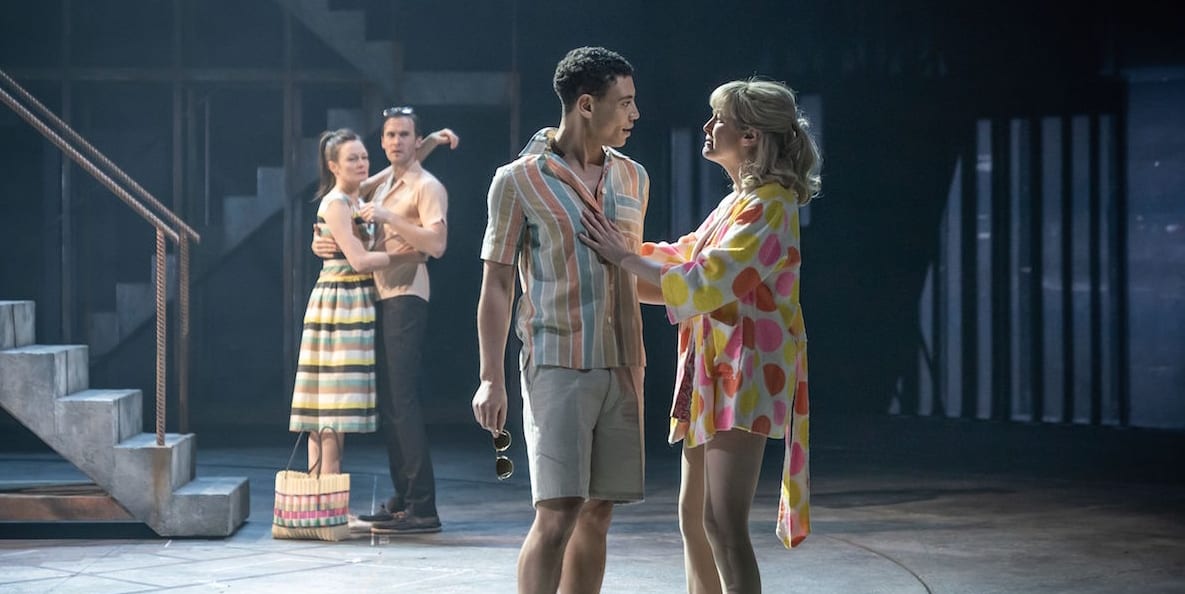Stories stand the test of time through translation, be it from one language to another, or from one genre to another. Stories survive according to the frequency with which they have been rewritten, retold, and reformulated, and this production of My Brilliant Friend certainly adds to Ferrante’s literary popularity. The staging of this epic story condenses all four novels of the series into a two-part play.
This play is a translation of form. My Brilliant Friend is the first book to emerge from the quartet entitled ‘Neapolitan Novels’ by the pen name, Elena Ferrante. It is through this work that Ferrante has become a best-selling author, or rather, it is through the English translation produced in 2012 by Ann Goldstein that has helped to circulate the novel worldwide.
The staging of this epic story condenses all four novels of the series into a two-part play. The theatricality of the work, capturing the essence of the vibrant Neapolitan village – together with the music (which evolves over the decades from Italian country-folk to Bowie), dance, and high-speed movement from all the members of the cast – glue your eyes to the stage. What is special about this stage adaptation, and different from other versions of the same work, is the immediacy; that is, the way it brings to life the voice of the community. While in the novel it is the narrator who essentially tells the fascinating story of female friendship, the Camorra, and the effects of migration, the play animates the story right before our eyes, almost as though we are living through the highs and lows with the characters. The portrayal of the characters is compassionate and warm, particularly the interpretation of the two leads, Lenù and Lila (Niamh Cusack and Catherine Mc Cormack respectively). Their chemistry on stage, craftsmanship, and energy leaves us nothing short of the sharp sense of empathy shared with their women.
Moreover, this is a translation of language, based on the English translation of the novel by Goldstein. Though Ferrante entitles her series as her ‘Neapolitan Novels’, the novels themselves are written in standard Italian. Any reference given to the characters’ code-switching into dialect is reported in Italian (i.e. it is the narrator – in Italian – who usually makes reference to who said what in dialect, leaving novel a monolingual text). This technique permeates into the translation of the novel by Goldstein and in this staging adapted by April De Angelis: the characters speak in English and any reference to the use of dialect is reported in English. What is interesting, then, is the director’s (Melly Still) choice to mix the cast’s different accents on stage. The use of accents alludes to the fact that the characters are rooted among the working-classes and the use of Received Pronunciation would not accurately acknowledge the social status of the characters. Though an interesting technique, this risks leaving the audience lost in translation. If Lenù (Niamh Cusack) has an Irish accent, her mother Immacolata (performed by Mary Jo Randel) a standard non-RP English accent, then why should her little sister Elisa (interpreted by Kezrena James) adopt a Welsh accent? And why does there not appear to be the same urgency to introduce different accents with other popular translated playwrights, such as Ibsen or Chekov?
This production makes a significant contribution to the development of drama translation and world literature. * For more on the ‘Making of My Brilliant Friend’, the author of this review will be delivering a lecture at the Cottesloe Room (National Theatre) on Thursday 16th January.

